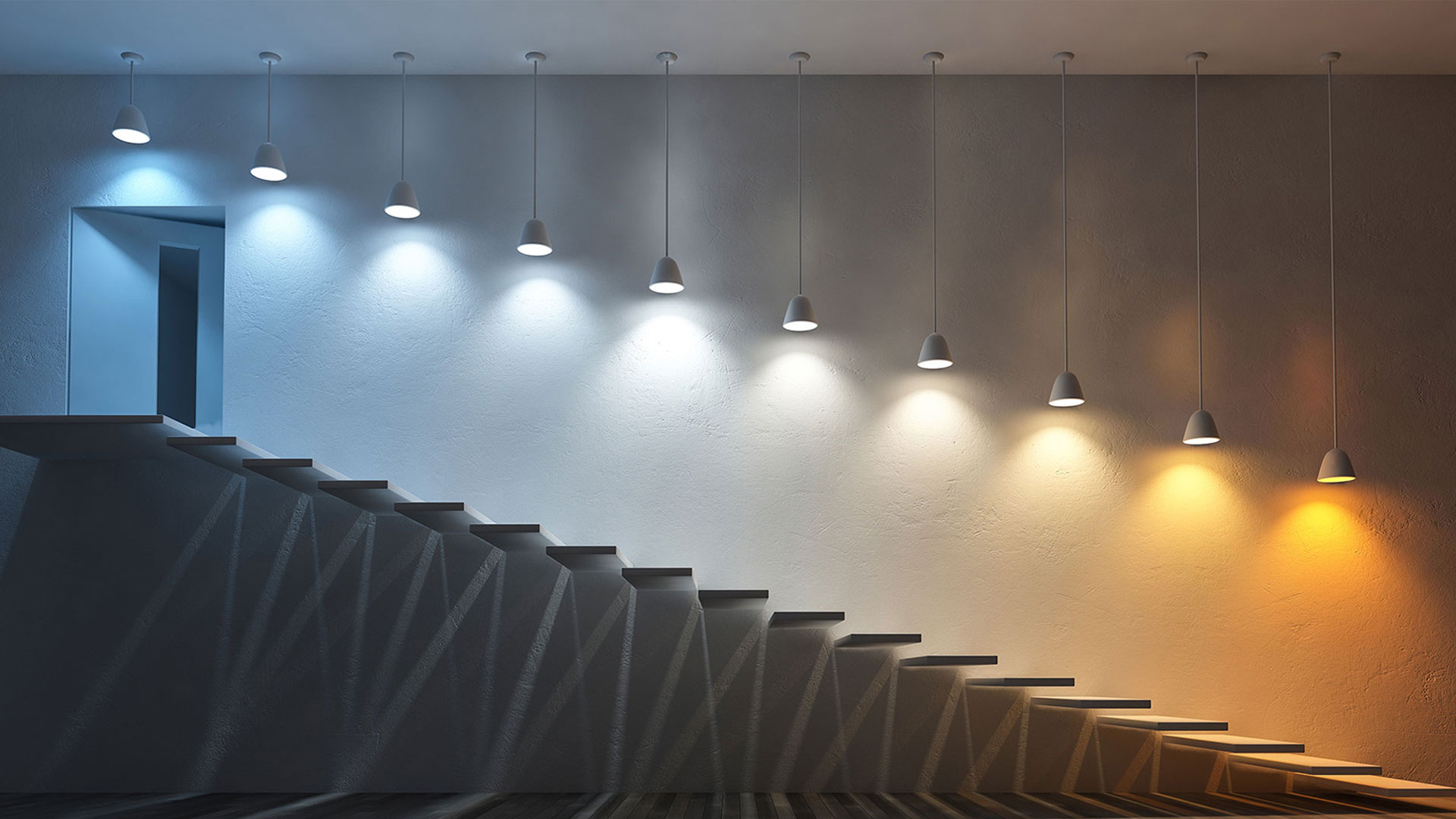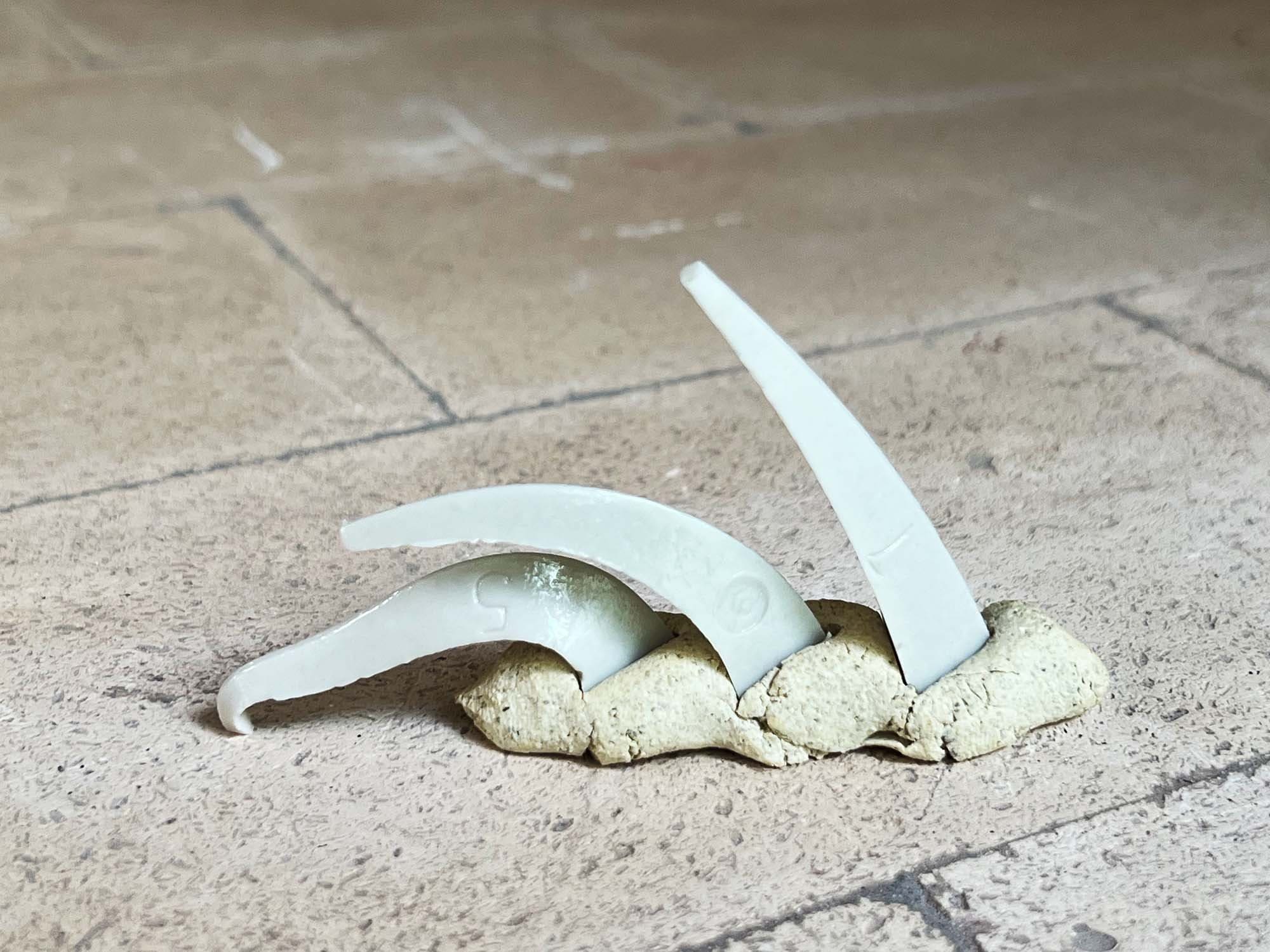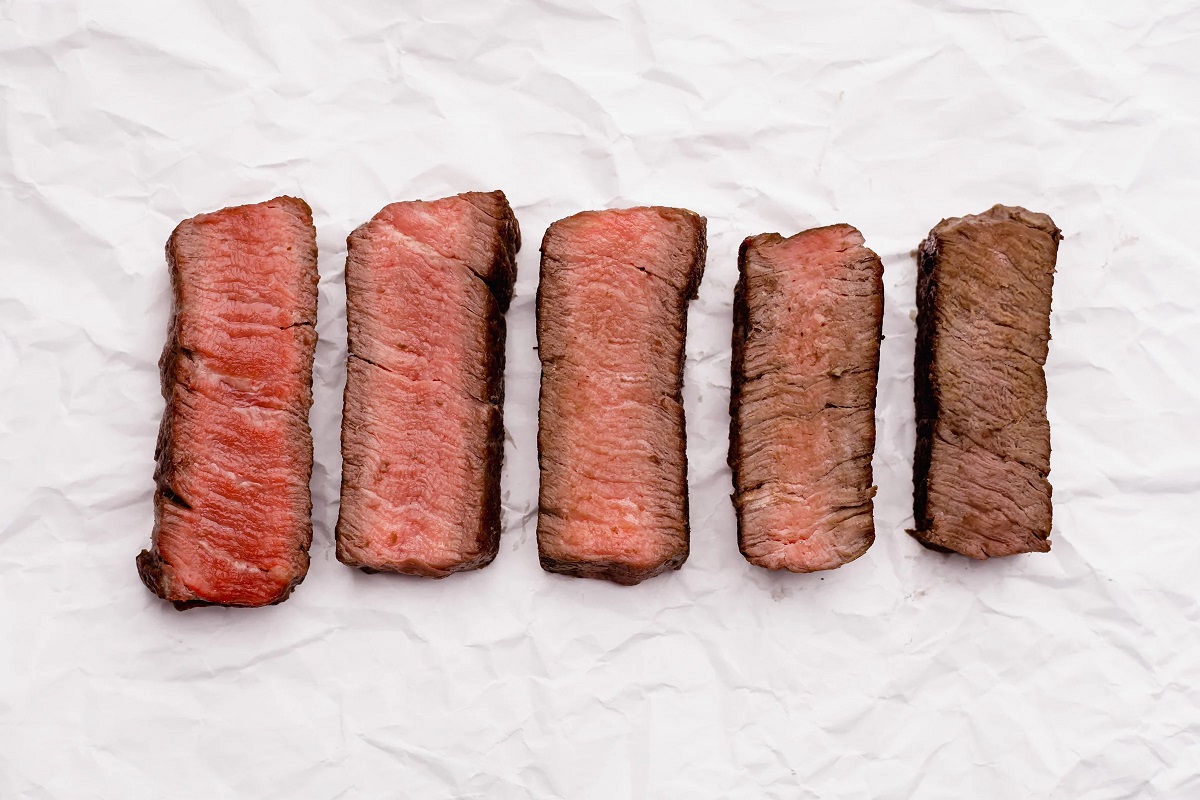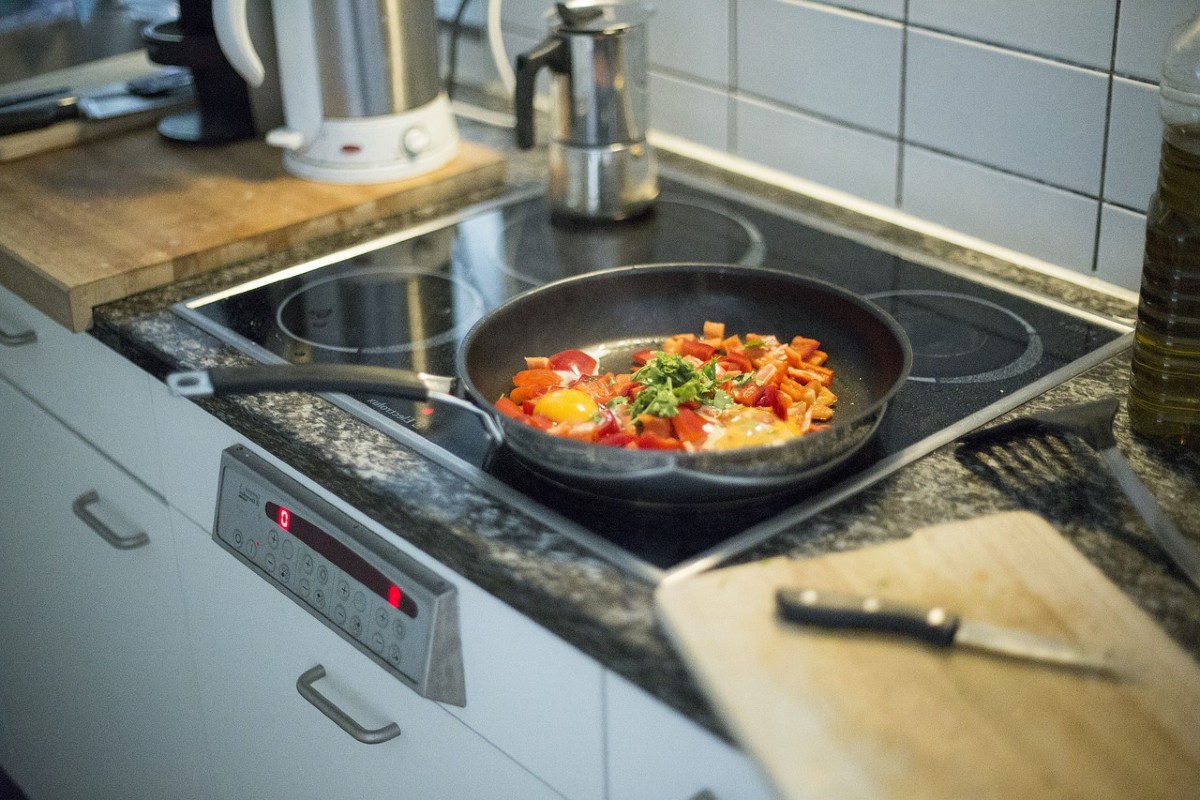Home>Art & Crafts>Understanding Color Temperature: A Guide To Choosing The Right Lighting


Art & Crafts
Understanding Color Temperature: A Guide To Choosing The Right Lighting
Published: February 19, 2024
Discover how to choose the perfect lighting for your art and crafts projects with our comprehensive guide to understanding color temperature.
(Many of the links in this article redirect to a specific reviewed product. Your purchase of these products through affiliate links helps to generate commission for Temperatures.com, at no extra cost. Learn more)
Table of Contents
- Introduction
- The Basics of Color Temperature
- How Color Temperature Affects Lighting
- Choosing the Right Color Temperature for Different Settings
- Understanding Kelvin and Its Role in Color Temperature
- The Impact of Color Temperature on Mood and Ambiance
- Tips for Selecting the Right Lighting Based on Color Temperature
- Conclusion
Introduction
Color temperature plays a crucial role in setting the mood and ambiance of any space. Whether you are decorating your home, setting up a retail display, or creating an art installation, understanding color temperature is essential for achieving the desired effect. In the world of art and crafts, the right lighting can make all the difference in showcasing your creations in the best possible way.
When it comes to lighting, color temperature refers to the warmth or coolness of the light emitted by a bulb or fixture. It is measured in Kelvin (K) and typically ranges from warm, yellowish tones to cool, bluish hues. As an art and crafts enthusiast, grasping the concept of color temperature can elevate your creative endeavors by allowing you to manipulate the visual impact of your work through strategic lighting choices.
In this comprehensive guide, we will delve into the intricacies of color temperature, exploring its impact on different settings and the emotions it evokes. By the end of this article, you will have a deeper understanding of how color temperature influences lighting and how to select the right lighting based on your specific needs. So, let's embark on this illuminating journey into the world of color temperature and its profound influence on art, crafts, and the spaces in which they are showcased.
The Basics of Color Temperature
Color temperature is a fundamental aspect of lighting that significantly impacts the visual perception of a space. It refers to the color appearance of light emitted by a source, typically measured in Kelvin (K). Understanding color temperature involves recognizing the correlation between the warmth or coolness of light and its effect on the ambiance and visual appeal of a setting.
The concept of color temperature is rooted in the way different light sources emit varying hues, ranging from warm tones to cool shades. Warm light, often associated with lower color temperatures (ranging from 2000K to 3000K), exudes a cozy and inviting ambiance reminiscent of traditional incandescent bulbs. In contrast, cool light, characterized by higher color temperatures (ranging from 4000K to 6500K), emits a crisp and refreshing glow, akin to natural daylight.
When selecting lighting for art and crafts, understanding the basics of color temperature is crucial for achieving the desired aesthetic and showcasing the true colors and textures of your creations. Warm light can enhance the richness of earthy tones and create a welcoming atmosphere, ideal for displaying handmade textiles or rustic pottery. On the other hand, cool light can accentuate the vibrancy of colors in paintings or sculptures, offering a contemporary and vibrant presentation.
Moreover, the color temperature of light sources can significantly impact the perception of space. Warm light tends to make a room feel cozier and intimate, making it suitable for living areas, bedrooms, and dining spaces. In contrast, cool light can create an open and energizing ambiance, making it ideal for workspaces, studios, and retail environments.
By grasping the basics of color temperature, you gain the ability to manipulate the visual impact of your art and crafts through strategic lighting choices. Whether you seek to evoke a sense of nostalgia with warm, ambient lighting or aim to infuse a modern edge with cool, crisp illumination, understanding color temperature empowers you to curate the perfect lighting environment for your creative endeavors.
How Color Temperature Affects Lighting
Color temperature profoundly influences the way lighting interacts with its surroundings, impacting the visual perception and ambiance of a space. The warmth or coolness of light, determined by its color temperature measured in Kelvin (K), plays a pivotal role in shaping the atmosphere and accentuating the features of art and crafts.
Warm light, characterized by lower color temperatures, infuses a sense of comfort and intimacy into a space. It envelops the surroundings in a gentle, golden glow, evoking a cozy and inviting ambiance reminiscent of a tranquil sunset. When used in the context of art and crafts, warm light can enhance the organic textures of handmade items, accentuating the earthy hues of woven fabrics or the rustic charm of wooden sculptures. It creates a harmonious interplay of light and shadow, adding depth and warmth to the visual presentation of artistic creations.
On the other hand, cool light, associated with higher color temperatures, imparts a crisp and refreshing aura to its environment. It bathes the surroundings in a bright, invigorating glow, akin to the clarity of natural daylight. In the realm of art and crafts, cool light can intensify the vibrancy of colors, lending a contemporary edge to paintings, glasswork, or modern sculptures. Its illuminating effect brings forth the intricate details and nuances of artistic pieces, allowing them to shine with clarity and precision.
The impact of color temperature on lighting extends beyond mere visual aesthetics. It also influences the emotional and psychological response of individuals within a space. Warm light fosters a sense of relaxation and comfort, making it ideal for creating a soothing ambiance in living areas, bedrooms, or cozy nooks where art and crafts are displayed. Conversely, cool light fosters an energizing and invigorating atmosphere, making it suitable for workspaces, studios, and retail settings where the focus is on showcasing creativity and innovation.
Understanding how color temperature affects lighting empowers art and crafts enthusiasts to curate the perfect visual environment for their creations. By harnessing the transformative power of warm and cool light, one can elevate the presentation of art and crafts, evoke specific emotions, and craft immersive experiences that captivate and inspire all who encounter them.
Choosing the Right Color Temperature for Different Settings
Selecting the appropriate color temperature for different settings is pivotal in creating the desired ambiance and accentuating the visual appeal of art and crafts. The interplay between warm and cool light can significantly influence the mood and perception of a space, thereby impacting the presentation of creative works. Understanding how to choose the right color temperature for various settings empowers individuals to curate immersive environments that complement and enhance their artistic endeavors.
In residential spaces such as living rooms, bedrooms, and dining areas, warm light with a color temperature ranging from 2700K to 3000K is often preferred. This gentle, golden glow fosters a cozy and inviting atmosphere, ideal for unwinding, socializing, and showcasing art and crafts with a touch of intimacy. The warm light accentuates the organic textures of handmade items, enriching the earthy tones of textiles, ceramics, and artisanal decor, while creating a tranquil and welcoming ambiance for both inhabitants and visitors.
In workspaces, studios, and retail environments, cool light with a color temperature ranging from 4000K to 5000K is commonly employed to foster an energizing and vibrant atmosphere. This crisp and refreshing illumination enhances focus, clarity, and visual acuity, making it ideal for illuminating creative workstations, displaying contemporary art, and showcasing innovative crafts. The cool light accentuates the vividness of colors, brings forth intricate details, and infuses the space with a sense of dynamism and modernity, thereby elevating the overall presentation of artistic creations.
For areas that serve dual purposes, such as multifunctional spaces or transitional zones, a balanced approach to color temperature may be beneficial. Utilizing adjustable lighting fixtures or a combination of warm and cool light sources allows for flexibility in creating diverse atmospheres to suit different activities and moods. By seamlessly transitioning between warm and cool color temperatures, these adaptable spaces can accommodate various art and crafts presentations, social gatherings, and productive work sessions, catering to the evolving needs and preferences of the occupants.
In outdoor settings, the color temperature of lighting plays a crucial role in enhancing the architectural features, landscaping, and outdoor art installations. Warm light with a color temperature around 3000K can impart a welcoming and serene ambiance to outdoor living spaces, while cool light with a color temperature around 5000K can illuminate pathways, sculptures, and contemporary outdoor art, creating a visually striking and immersive experience for visitors and passersby.
By strategically choosing the right color temperature for different settings, individuals can harness the transformative power of lighting to complement, accentuate, and elevate the presentation of art and crafts, creating captivating and immersive environments that resonate with the intended emotions and aesthetics.
Understanding Kelvin and Its Role in Color Temperature
Kelvin (K) is the unit of measurement used to quantify the color temperature of light sources, playing a pivotal role in shaping the visual and emotional impact of lighting. Understanding Kelvin and its role in color temperature is essential for art and crafts enthusiasts seeking to harness the transformative power of lighting to showcase their creations in the best possible light.
In the context of color temperature, Kelvin serves as a numerical scale that denotes the warmth or coolness of light emitted by a source. Lower Kelvin values, typically ranging from 2000K to 3000K, correspond to warm light with a soft, yellowish hue, reminiscent of candlelight or incandescent bulbs. As the Kelvin value increases, the light transitions towards cooler tones, eventually reaching the range of 4000K to 6500K, where it exudes a crisp, bluish-white glow akin to natural daylight.
The correlation between Kelvin and color temperature is integral to understanding how different light sources can evoke specific moods and enhance the visual appeal of art and crafts. For instance, a light source with a lower Kelvin value creates a cozy and intimate ambiance, ideal for showcasing handmade textiles, artisanal pottery, and other crafts that benefit from a warm, inviting glow. On the other hand, a higher Kelvin value lends a refreshing and contemporary aura to the surroundings, making it suitable for illuminating vibrant paintings, modern sculptures, and innovative art installations.
By comprehending the role of Kelvin in color temperature, individuals can make informed decisions when selecting lighting for their creative spaces. Whether aiming to evoke nostalgia with warm, ambient lighting or infuse a modern edge with cool, crisp illumination, understanding Kelvin empowers art and crafts enthusiasts to curate immersive environments that accentuate the unique qualities of their creations.
Furthermore, Kelvin's influence extends beyond the visual realm, impacting the emotional and psychological responses of individuals within a space. Warm light with lower Kelvin values fosters a sense of relaxation and comfort, while cooler light with higher Kelvin values creates an energizing and invigorating atmosphere. This nuanced interplay between Kelvin and color temperature allows for the creation of tailored lighting experiences that resonate with the intended emotions and aesthetics of the art and crafts on display.
In essence, understanding Kelvin and its role in color temperature equips individuals with the knowledge to leverage lighting as a dynamic tool for enhancing the presentation of art and crafts. By harnessing the nuanced nuances of Kelvin, one can craft immersive environments that captivate and inspire, elevating the visual impact of creative works and fostering memorable experiences for all who engage with them.
The Impact of Color Temperature on Mood and Ambiance
The impact of color temperature on mood and ambiance is profound, shaping the emotional and psychological responses of individuals within a space. Warm and cool light, characterized by different color temperatures measured in Kelvin (K), evoke distinct feelings and perceptions, thereby influencing the overall atmosphere and the way art and crafts are experienced.
Warm light, with lower color temperatures ranging from 2000K to 3000K, envelops a space in a gentle, golden glow, reminiscent of a cozy sunset or the soft radiance of candlelight. This warmth fosters a sense of comfort, relaxation, and intimacy, making it ideal for creating inviting environments in residential settings and intimate art showcases. The soothing ambiance created by warm light can evoke feelings of nostalgia, serenity, and emotional connection, enhancing the appreciation of handmade crafts, textiles, and traditional art forms.
In contrast, cool light, characterized by higher color temperatures ranging from 4000K to 6500K, infuses a space with a crisp, refreshing aura akin to natural daylight. This coolness fosters an energizing and invigorating atmosphere, making it suitable for workspaces, studios, and contemporary art exhibitions. The clarity and vibrancy of cool light can amplify the visual impact of modern sculptures, abstract paintings, and innovative crafts, creating a dynamic and stimulating environment that encourages creativity and focus.
The interplay between warm and cool light extends beyond visual aesthetics, influencing the emotional and psychological well-being of individuals. Warm light promotes relaxation, comfort, and a sense of coziness, making it conducive to unwinding, socializing, and contemplative engagement with art and crafts. On the other hand, cool light fosters alertness, clarity, and a sense of dynamism, making it ideal for productive activities, creative exploration, and showcasing cutting-edge artistic expressions.
By understanding the impact of color temperature on mood and ambiance, individuals can harness the transformative power of lighting to curate immersive environments that resonate with the intended emotions and aesthetics of their art and crafts. Whether aiming to evoke a sense of tranquility with warm, ambient lighting or infuse a space with a contemporary edge using cool, crisp illumination, the strategic use of color temperature empowers art and crafts enthusiasts to craft captivating and emotionally resonant experiences for all who engage with their creations.
Tips for Selecting the Right Lighting Based on Color Temperature
-
Consider the Setting: When selecting lighting based on color temperature, consider the specific setting where the art or crafts will be displayed. For intimate spaces such as living rooms and bedrooms, warm light with a color temperature ranging from 2700K to 3000K creates a cozy ambiance, enhancing the visual appeal of handmade items. In contrast, for workspaces and contemporary art galleries, cool light with a color temperature ranging from 4000K to 5000K fosters a vibrant and dynamic atmosphere, accentuating the modernity of artistic expressions.
-
Test Different Color Temperatures: Experiment with different color temperatures to determine the most flattering illumination for your art and crafts. Utilize adjustable lighting fixtures or smart bulbs that allow you to switch between warm and cool light, enabling you to assess how each color temperature enhances the colors, textures, and overall presentation of your creative works.
-
Layer Lighting for Versatility: Incorporate a layered lighting approach by combining warm and cool light sources to create versatile and adaptable environments. This technique allows you to tailor the lighting to suit different activities and moods, providing flexibility in showcasing art and crafts in multifunctional spaces or transitional zones.
-
Utilize Dimmers and Filters: Employ dimmer switches and color filters to fine-tune the color temperature of your lighting. Dimmers enable you to adjust the intensity of the light, while color filters can modify the warmth or coolness of the illumination, allowing for precise control over the ambiance and visual impact of your art and crafts.
-
Consider Natural Light: Take into account the influence of natural light in the display area when selecting artificial lighting. Harmonizing artificial lighting with natural light can create a seamless and balanced illumination scheme, ensuring that the colors and textures of your art and crafts are showcased authentically and harmoniously.
-
Seek Professional Advice: If unsure about selecting the right lighting based on color temperature, consider consulting with lighting designers or professionals who can provide expert guidance tailored to your specific art and crafts display requirements. Their insights can help you make informed decisions and achieve optimal lighting solutions that accentuate the unique qualities of your creations.
By implementing these tips, you can effectively select the right lighting based on color temperature, enhancing the visual impact and emotional resonance of your art and crafts, and creating captivating environments that engage and inspire viewers.
Conclusion
In the realm of art and crafts, the significance of color temperature in lighting cannot be overstated. The interplay between warm and cool light, as determined by the measured Kelvin values, holds the power to transform the ambiance, accentuate the visual appeal, and evoke specific emotions within a space. As we conclude this illuminating journey into the world of color temperature and its profound influence on art and crafts, it becomes evident that understanding and leveraging color temperature is essential for curating immersive environments that elevate the presentation of creative works.
By grasping the basics of color temperature and its impact on lighting, art and crafts enthusiasts gain the ability to strategically manipulate the visual impact of their creations. Whether seeking to evoke a sense of nostalgia with warm, ambient lighting or infuse a modern edge with cool, crisp illumination, the nuanced understanding of color temperature empowers individuals to curate the perfect lighting environment for their specific needs.
The role of Kelvin in quantifying color temperature serves as a guiding metric for selecting the most suitable lighting for different settings. Whether it's the cozy warmth of residential spaces, the dynamic vibrancy of workspaces and studios, or the captivating allure of outdoor art installations, the right color temperature can enhance the presentation of art and crafts, creating captivating and emotionally resonant experiences for all who engage with them.
Furthermore, the impact of color temperature on mood and ambiance underscores the transformative power of lighting in shaping the emotional and psychological responses of individuals. Warm light fosters feelings of comfort, intimacy, and nostalgia, while cool light stimulates alertness, clarity, and modernity. By harnessing this influence, art and crafts enthusiasts can craft immersive environments that resonate with the intended emotions and aesthetics of their creations, fostering memorable experiences for all who encounter them.
In conclusion, the art and crafts world is intricately intertwined with the nuanced nuances of color temperature in lighting. By embracing the principles outlined in this guide and implementing the tips for selecting the right lighting based on color temperature, individuals can elevate the visual impact and emotional resonance of their art and crafts, creating captivating environments that engage and inspire viewers. Through the strategic use of color temperature, art and crafts enthusiasts can truly illuminate their creative endeavors, allowing their works to shine with clarity, vibrancy, and emotional depth.













